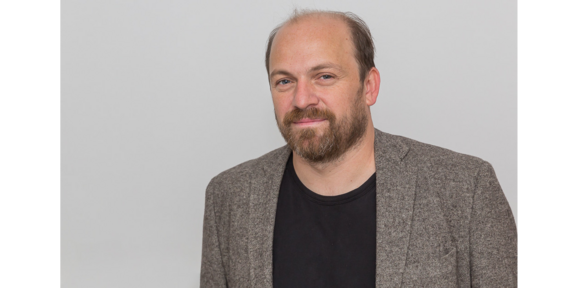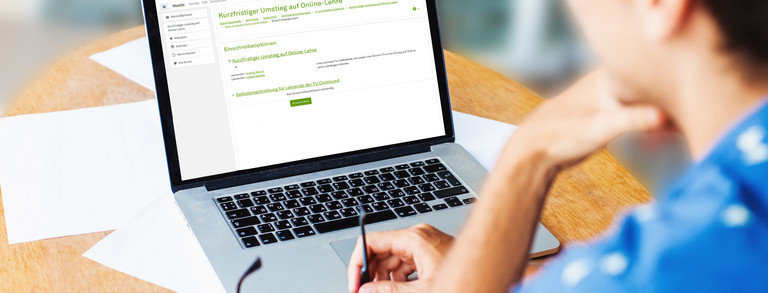Professor Matthias Schneider’s “No Covid” Initiative Arouses Enormous Media Response
- Research
- Corona

In the past days and weeks, No Covid has met with wide-scale media attention. Numerous media, including the newspapers DIE ZEIT, FAZ, and DER SPIEGEL, have reported on the initiative, in which leading scientists from various disciplines have joined forces. In a joint strategy paper, the group calls for reducing the number of coronavirus infections to zero in order to put an end to the perpetual backwards and forwards between lockdown and easing of restrictions and to create long-term prospects for society, the economy, education and healthcare. The group’s multi-stage model follows the example of countries such as Australia and New Zealand, where the virus has been successfully contained since the beginning of the pandemic. The 14-strong “No Covid” strategy group formed around Professor Matthias Schneider, Head of Medical and Biological Physics at TU Dortmund University. In this interview, he explains how a long-term strategy might look and why communication is so important.
Professor Schneider, why is it so important now to reduce the number of infections as quickly and as far as possible?
Low numbers are best from every perspective, both as far as health is concerned as well as from economic and social aspects. Why this was not clearly communicated from the outset, I don’t know – but it’s nothing new: When you’re faced with a potentially big risk, you don’t wait, you act proactively. At the beginning, for example, there was a lot of talk about supposedly conflicting objectives between the economy and health. But not even the more conservative wing in the business community sees it like that. If the health sector suffers and people are anxious, then the economy suffers too. It’s essential that we’re able to plan and act accordingly. This applies for families too. The family expert in our group, Menno Baumann, can substantiate that it’s above all uncertainty that leads to stress among parents and children. Quarantine again and again, unexpected changes, school closures – that’s the problem. That’s why a lockdown should be done properly – so that it only has to be done once.
In your opinion, how is a lockdown done properly?
A lockdown and then the easing of restrictions shouldn’t simply be linked to an arbitrary date. That’s even more illogical than saying ‘Don’t drink and drive between noon and 6.00 p.m.’. The easing of restrictions must instead depend on reaching a specific target – for example, the number of new infections per week where the source of contagion is unknown must be below 10 cases per 100,000 inhabitants. It doesn’t matter if the incidence rate is higher, since people in quarantine don’t contribute to further infections. If an end to the lockdown is linked to this criterion, people are more motivated to adhere to the rules. Society takes control again and doesn’t allow itself to be dominated by the virus. Lots of countries have shown that this works, take Australia, for example, by the way a democracy with similar federal structures as Germany and cities larger than Munich. Restaurants and gyms have already long reopened there, even going to concerts is possible again. We can achieve this in Germany too, but we need to act quickly before the far more contagious mutations spread further, and the pandemic escalates more and more out of control.
How would a No Covid strategy based on the Australian model look?
In principle, we can look at Germany here: The lockdown last spring was perfectly sufficient, the numbers dropped substantially, but there was no strategy in place for the time after. Things need be done differently now. This lockdown must pay off. So that people adhere to the rules consistently, it’s important that politics communicate very clearly what the objective is and how the long-term strategy for achieving it looks. We don’t mean a massive lockdown with border closures and the shutting down of companies until we have no more cases at all. The idea behind our Green Zone model is rather to be able to reopen at local level as quickly as possible.
How exactly does this zone model work?
Areas where there are no new infections for a few weeks are declared green zones. Here, people can return more or less to normality, even if the rest of the country is lagging behind. Where there are still infections, strict restrictions remain in place in order to protect the green zones. Travelling across zones is allowed if it’s essential, for example for professional reasons. However, in order to protect the virus-free green zone, special precautions must be adopted. Efforts by industry to limit employees’ mobility for a few weeks should be encouraged and under certain circumstances even subsidized. This also triggers competition between regions, which is an additional incentive to achieve zero cases. Melbourne, a city with four million inhabitants, managed to achieve this in just some four weeks.
Doesn’t it make a difference that Germany, unlike Australia and New Zealand, isn’t an island?
To be honest, I find this argument positively ludicrous, not only as a physicist: The moon isn’t an apple either, but they both nonetheless follow the same laws of nature. The model can be applied in practice in many different ways. That’s why it works in so many different places, for example in China, Taiwan and Singapore. There are differences, of course, but Thuringia is not Bavaria either. We have to be receptive to the idea of learning from others – and quickly. That’s why, for example, I’ve also asked those responsible in Australia and New Zealand about their strategy.
Why does communication play such an important role in the pandemic?
All citizens must be involved. This is what the political scientists on our roundtable, Elvira Rosert and Maximilian Mayer, are also stressing, as are Stephen Ducket and Michael Baker, who are advising the Australian and New Zealand governments on the pandemic. If a clear target and a long-term strategy are communicated openly, it will motivate people to adhere to the rules. This was the case in Australia. There, it was even possible to reduce the number of infections faster than assumed because large numbers of people adhered to the rules in order to profit from an easing of restrictions as soon as possible. In Germany at the moment, only vague plans and rhetoric about ‘persevering’ are being communicated, which lead to uncertainty and, in the worst case, destroy the population’s trust in the respective institutions. Understandably, large swathes of the business community are pressing for a speedy end to the lockdown. However, it’s no use being able to save some shops by opening them prematurely, but by doing so cause a new lockdown where all the more shops are then obliged to close forever. With the No Covid plan, we instead open up possibilities for reliable planning and offer people perspectives, which in the end benefit everyone. No Covid doesn’t aim to restrict the freedom of each and every individual. On the contrary, it aims to make freedom possible again quickly and sustainably. We must control the virus proactively as far as possible and not – as was the case with our previous reactive behavior – be controlled by it.
What was your motivation for No Covid?
Well, last spring everything seemed so clear to me: Bring the numbers right down, then extinguish the last embers over the summer and that’s that. Instead, people suddenly started saying ‘We have to get used to the virus’. A statement devoid of content and dangerous. Just imagine if someone said ‘We have to get used to road fatalities, starving children or cancer patients’. No, we don’t have to, and we can’t afford to! It applies in these examples too: The fewer, the better and, if possible, none at all. There are really only two ways to deal with the virus: Either you let the entire population catch it or you radically suppress it. In my opinion, no one can honestly maintain that the first option is acceptable. We should remember the golden rule: If I ever belong to the risk group, society will hopefully not consider me to be ‘expendable’.
And how did your initiative and the strategy paper ultimately come about?
They were triggered by my article last September in DIE ZEIT about the physical laws of a pandemic. This prompted a dialogue with other concerned citizens and the idea of talking to Yaneer Bar-Yam, pioneer of the Green Zone method, and Australian health economist Stephen Ducket. This in turn brought on board virologist Melanie Brinkmann and physician Michael Hallek. Through them, many other distinguished scientists have joined in. We’re a mixed bunch, a kind of think tank, and we’re above all independent – just as Einstein said things should be. After many sleepless nights – which, by the way, haven’t stopped – we published the strategy paper just six days after our first meeting, and the media reported on it immediately. The momentum was crazy, the path unpredictable, but our motivation was and is to change something. And if, in the end, none of it helps, we can at least tell our children at some point that we tried. We’ve joined forces because we want to preserve our free society. In many respects, we’re currently living through a massive crisis that a virologist or a physicist alone cannot solve. We must therefore work together in an interdisciplinary way and learn from each other as well as from other countries.
Countless media inquiries about No Covid arrive on your desk every day. Were you prepared for this?
Well, we had to expect that. People are anxious, and this triggers a lot of media interest. Fortunately, we’re meanwhile a group of 14 people who mutually support each other. This is important so that family life doesn’t completely fall by the wayside in all the hubbub. I myself sometimes find our presence in the media rather strenuous and therefore try to stay out of the limelight. Others are far better at that than me. It additionally helps me to focus on how things are progressing because a real problem lies ahead of us here, and our proposal requires a lot of thought. At the end of the day, we need to convince the decision-makers – otherwise there will be nothing left but a flash in the media pan.










